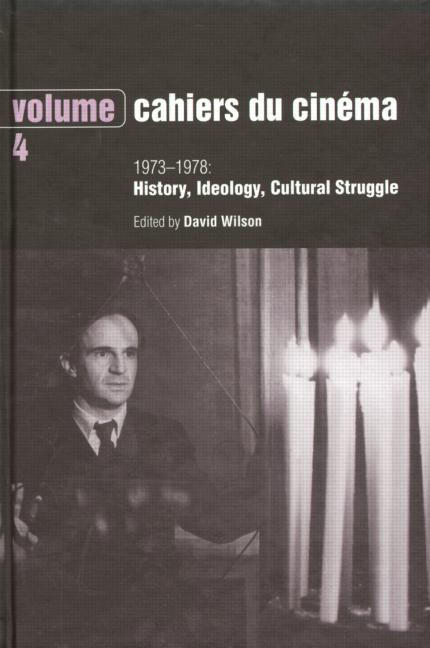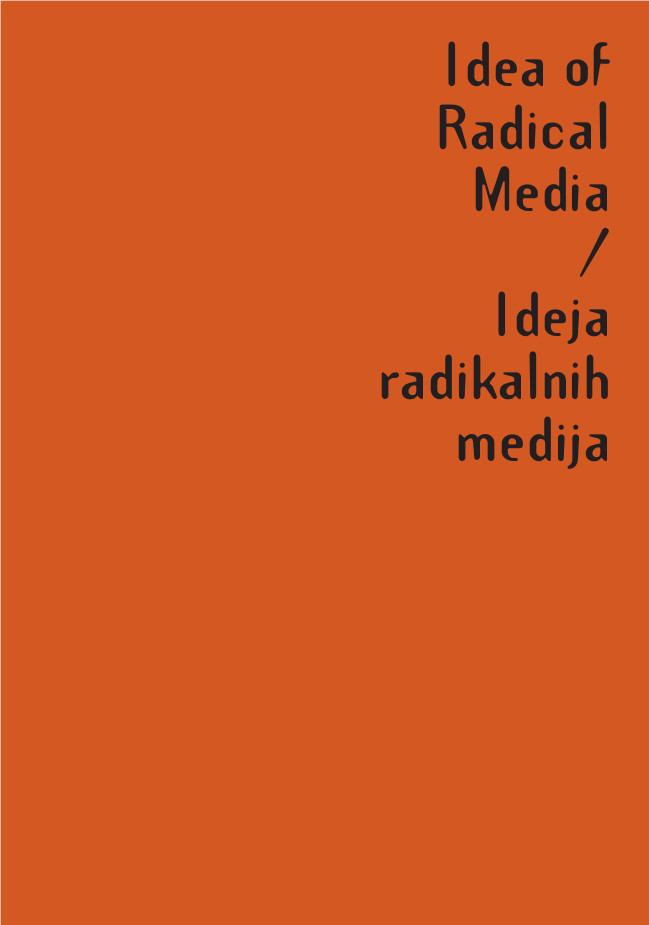Cahiers du Cinéma, vols. 1–4 (1951–78/1985–2000) & Special Issues in English (1966-67)
Filed under book, magazine | Tags: · aesthetics, cinema, film, film criticism, film history, film theory, philosophy of film




Cahiers du Cinéma [Notebooks on Cinema] is an influential French film magazine founded in 1951 by André Bazin, Jacques Doniol-Valcroze and Joseph-Marie Lo Duca. It developed from the earlier magazine Revue du Cinéma involving members of two Paris film clubs—Objectif 49 (Robert Bresson, Jean Cocteau and Alexandre Astruc, among others) and Ciné-Club du Quartier Latin. Initially edited by Éric Rohmer, it included amongst its writers Jacques Rivette, Jean-Luc Godard, Claude Chabrol and François Truffaut. (from Wikipedia)
This set of four volumes presents selected texts from the years 1951-1978 in English translation.
Cahiers du Cinéma: The 1950s: Neo-Realism, Hollywood, New Wave
An anthology from Cahiers du Cinéma, nos 1–102, April 1951 – December 1959
Edited by Jim Hillier
Publisher Harvard University Press, 1985
ISBN 0674090608
312 pages
Cahiers du Cinéma: 1960-1968: New Wave, New Cinema, Reevaluating Hollywood
An anthology from Cahiers du Cinéma, nos 103–207, January 1960 – December 1968
Edited by Jim Hillier
Publisher Harvard University Press, 1986
ISBN 0674090624
363 pages
Cahiers du Cinéma, Volume 3: 1969-1972: The Politics of Representation
An anthology from Cahiers du Cinéma, nos 210–239, March 1969 – June 1972
Edited by Nick Browne
Publisher Routledge, in association with the British Film Institute, 1990
ISBN 0415029872
352 pages
Cahiers du Cinema, Volume 4: 1973-1978: History, Ideology, Cultural Struggle
An anthology from Cahiers du Cinéma, nos 248–292, September 1973 – September 1978
Edited by David Wilson
With an Introduction by Bérénice Reynaud
Publisher Routledge, in association with the British Film Institute, 2000
ISBN 0415029880
323 pages
Publishers: Volume 1, Volume 2, Volume 3, Volume 4.
Volume 1 (1950s)
Volume 2 (1960-1968)
Volume 3 (1969-1972)
Volume 4 (1973-1978)
Cahiers du Cinema in English, ed. Andrew Sarris:
Number 1 (Jan 1966, 74 pp, 57 MB, via chef, added 2015-1-11),
Number 2 (Mar 1966, 82 pp, 65 MB, via chef, added 2015-1-12),
Number 3 (May 1966, 74 pp, 63 MB, via chef, added 2015-1-16),
Number 4 (Jul 1966, 66 pp, 57 MB, via chef, added 2015-1-16),
Number 5 (Sep 1966, 65 pp, 56 MB, via chef, added 2015-1-16),
Number 6 (Dec 1966, 66 pp, 57 MB, via chef, added 2015-1-16),
Number 7 (Jan 1967, 66 pp, 61 MB, via chef, added 2015-1-16),
Number 8 (Feb 1967, 68 pp, 44 MB, via LtJ),
Number 9 (Mar 1967, 65 pp, 59 MB, via chef, added 2015-1-17),
Number 10 (May 1967, 68 pp, 43 MB, via LtJ),
Number 11 (Sep 1967, 68 pp, 43 MB, via LtJ)
Number 12 (Dec 1967, 66 pp, 60 MB, via chef, added 2015-1-18)
See also: Daniel Fairfax: The Red Years of Cahiers du cinéma, 1968-1973 (2021).
Comments (4)Tomislav Medak, Petar Milat (eds.): Idea of Radical Media (2013) [English/Croatian]
Filed under book | Tags: · media, media activism, media culture, net culture, new media, politics, tactical media

This is the “reader from the Idea of Radical Media conference, held June 7-8, 2013 in Zagreb, Croatia, and organized by the Multimedia Institute. The conference took place in the context of the exhibition Prospects of Arkzin and the media action Installing the Public, both revisiting the Arkzin phenomenon two decades later. Arkzin was a collective and a publication that emerged out of the Anti-War Campaign in the early 1990s and gave a theoretical and polemical voice to anti-nationalist positions. The publishing and activist practices of Arkzin anticipated and reflected the practices of tactical media that were crystallizing from a particular confluence of a political moment marked by the post-socialist transition, post-Yugoslav conflicts and alter-globalist contestations, and a technological moment of the rise of early Net.
However, the conference and the reader have a broader aim. On the one hand, we wanted to look back at the practical articulations and discursive re-articulations of radical media practices in arts, mass communication and political work and over the last two decades. On the other, to reasses the notion of radical media from a broader historical perspective and the critical perspective of the current political moment.” (from the Introduction)
With essays by Clemens Apprich, Eric Kluitenberg, Jodi Dean, Matteo Pasquinelli, Branka Ćurčić, Alessandro Ludovico, Anthony Iles, Joanne Richardson, Vera Tollmann, Katarina Peović Vuković and Ana Peraica.
Idea of Radical Media / Ideja radikalnih medija
Publisher Multimedia Institute, Zagreb, 2013
ISBN 9789537372101
256 pages
PDF
See also Prospects of Arkzin catalogue (48 pp, 2013)
Metahaven: Can Jokes Bring Down Governments? Memes, Design and Politics (2013)
Filed under pamphlet | Tags: · activism, design, fun, memes, politics, power

“These are serious times, or so our governments keep telling us. Strangling economies with their austerity policies, they assure us that they have no choice. In a world where “there is no alternative”, how do you dissent? Once upon a time, graphic designers would have made political posters and typeset manifestos. Today, protest has new strategies. Enter the internet meme. With its Darwinian survival skills and its viral potential, the meme is a way of scaling up protest. Hackers and activists have learned to unleash the destructive force of a Rick Astley video. They have let slip the Lolcats of war. Pranks have become a resistance strategy. As the rise of Beppe Grillo in Italy testifies, this may be the hour to fight nonsense with nonsense. Jokes are an open-source weapon of politics, and it is time to tap their power.”
Publisher Strelka Press, 2013
ISBN 9785906264077
Review (Shumi Bose, Blueprint)
Publisher
Authors (in an interview with Aaron Peters)

